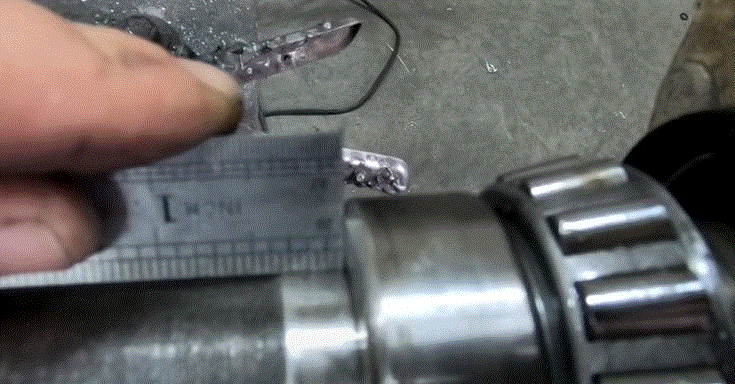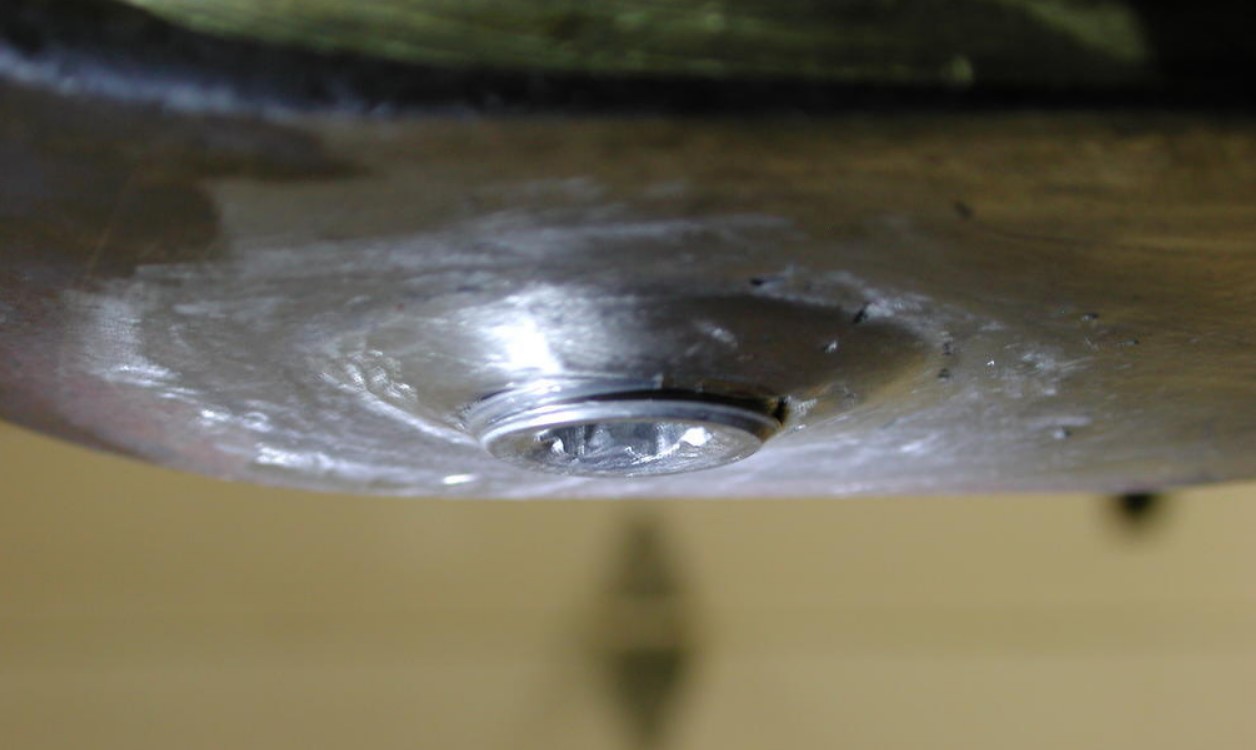Search Forum
Ford 9" axle shaft/bearing replacment
Ford 9" axle shaft/bearing replacment
|
Although I have had a lot of experience with the Ford 9", until recently, I have not had to use a stock type bearing on one. Usually, when I build a 9" for drag racing, I put the "big" housing ends on it and use the O ring style sealed bearing with the seal before the bearing in the axle tube.
Recently, I took the 3rd member out of my 85 and this thing was in pretty bad shape due to water in the gear dope. Long story short, this thing is getting new ring and pinion, bearings and a trac loc carrier. Upon inspecting the splines (31 spline axle with a 2.890 bearing) they are hammered as well, so we are getting some new axles and axle bearings. Here is where it gets interesting! I order a new set of Motive axles and some Timken axle bearing kits (KIT 20). Usually, on these things, If I am putting a stock bearing back on the original axle, I take a quick measurement between the retaining ring and the end of the machined surface so I can get the bearing set up in the right place. Here is the rub! The new axles have a longer machined "boss" than the originals. I get out my caliper, measure from the outside of the retaining ring (Wedding ring) to the outside flange (where the studs are) and push the assembly on. Back in the day, I would not have given this a second thought, but when I got it positioned where I wanted it, it seems like the bearing is a fair amount of distance further from the shoulder on the axle behind the flange than it was on the old axles. As a matter of fact, the old axle was seated right on the shoulder. Seems to me that back in the day, we used to press the bearings onto the axle until the bearing race contacted the ledge on the inside of the axle flange and than, we stopped, and shoved the "wedding ring" on and launched it. I am starting to think that I am over thinking this (as I seem to do with everything the older I get), but I just don't understand why everyone is so hell bent on putting the wedding right on in the same place as the old one, when aftermarket bearings and "wedding rings" and frequently different dimensions from the OEM stuff! At this point, as old as the 9" is on most trucks, this is likely the 2nd or 3rd bearing replacement for some of these, which means that the aftermarket bearing kits are all different widths than the OEM's and other aftermarket manufacturers, so why is the distance from the wedding ring to the end of the boss important? Seems to me we always seated the bearings on the shoulder and that was that! I wanted to see if anyone out here had any feedback or thoughts on this. |
Re: Ford 9" axle shaft/bearing replacment
|
Hi Jake,
I have the 9" on my 84 and I have the Motive axles and the same Timken kit I installed new. I'd like to help but I just don't understand your question. I'm newer at this than most so I think I just don't follow your terminology. Clarify your question for me and I'll try to help.
LittleBeefy aka Chad
“Dot Doitall”: 1984 Bronco XLT 460 (C8VE), Edelbrock Pro-Flo 4, ZF5, NP205, D44HP solid axle, 4.56 urban assault vehicle "Bebe": 2022 Bronco Badlands 2dr 2.7l, Sasquatch, Iconic Silver, Black Marine-grade interior, hard-top "Celeste": 1979 Porsche 928 4.5l K-jet, 5-sp, S4/GTS brakes, LSD, Pasha interior |
Re: Ford 9" axle shaft/bearing replacment
|
Let me take one quick stab at this to see if I understand. Maybe I don't.
The race from that bearing set will press into the housing completely flush with the outside face of the housing. The bearing will press onto the axle shaft as far as a hydraulic press will go (you don't need to stop short). The Motive axles are already the correct length so they should go in all the way and sit snugly. There will be a small gap that will be closed when you tighten down the retainer. Make sure to put the drivers side axle in first so you don't have to fight the double set of spider gears on that side of the chunk. You do not need to measure anything. You do not need to cut anything. You do not need to modify anything. When you put everything "all the way on and as tight as it is supposed to go", it is correctly installed. Does that help?
LittleBeefy aka Chad
“Dot Doitall”: 1984 Bronco XLT 460 (C8VE), Edelbrock Pro-Flo 4, ZF5, NP205, D44HP solid axle, 4.56 urban assault vehicle "Bebe": 2022 Bronco Badlands 2dr 2.7l, Sasquatch, Iconic Silver, Black Marine-grade interior, hard-top "Celeste": 1979 Porsche 928 4.5l K-jet, 5-sp, S4/GTS brakes, LSD, Pasha interior |
Re: Ford 9" axle shaft/bearing replacment
|
In reply to this post by Littlebeefy
Chad:
Sorry for all the jargon! Sometimes I get carried away! Let me ask you a simple question. How far did you push the axle bearing onto the axle? I keep seeing people saying that they measure the distance between the retaining ring to the end of the machined surface on the axle.  I call bullshit! As you and I have learned, the machined surface on our new Motive axles are at least a quarter inch longer than the stock axles, and the retaining ring on my bearing kit is almost .050" narrower than the original. What good would it do to measure the distance of the retaining ring to the edge of the machined surface on the new axle? I just push the bearing on until it bottoms against the machined ledge on the axle, and than, push on the retaining ring and have NEVER had a problem with interference between the drum and backing plate OR had the drum out too far. Before I start blasting people for saying silly things on the internet LOL!!! I thought I would reach out to the learned folks here on the forum and get some other viewpoints or horror stories! Maybe I have been doing it all wrong all these years! |
Re: Ford 9" axle shaft/bearing replacment
|
I'm with you. Measuring off of the end of the retainer is useless when you are comparing to the OEM parts.
With THOSE EXACT PARTS, I used a 20-ton shop press and pushed those rings all the way up until I got "serious resistance" from the press. Once I put it all together at the rear, it snugs well with no binding anywhere. FYI, I have drums at the rear, in case that matters. Good choice on axles BTW. I can vouch for the strength and they are a great value.
LittleBeefy aka Chad
“Dot Doitall”: 1984 Bronco XLT 460 (C8VE), Edelbrock Pro-Flo 4, ZF5, NP205, D44HP solid axle, 4.56 urban assault vehicle "Bebe": 2022 Bronco Badlands 2dr 2.7l, Sasquatch, Iconic Silver, Black Marine-grade interior, hard-top "Celeste": 1979 Porsche 928 4.5l K-jet, 5-sp, S4/GTS brakes, LSD, Pasha interior |
Re: Ford 9" axle shaft/bearing replacment
|
Yea, could not beat the price either! $200 to my door! My truck was previously a snow plow vehicle and even though it only had 45K, the splines on the axles and carrier side gears were absolutely destroyed!
Ring and Pinion looked like the surface of the moon, bearings were pitted beyond belief! One of the things I never understood is why OH WHY didn't they put a drain plug on the Ford 9"? This may be one of the stupidest design oversights that I have ever encountered! |
Re: Ford 9" axle shaft/bearing replacment
|
I too am annoyed by the lack of a drain plug. I was thinking about welding a bung into the bottom of the housing next time I have the chunk out. Anyone ever do that?
If you have the chunk out, now is your chance.
LittleBeefy aka Chad
“Dot Doitall”: 1984 Bronco XLT 460 (C8VE), Edelbrock Pro-Flo 4, ZF5, NP205, D44HP solid axle, 4.56 urban assault vehicle "Bebe": 2022 Bronco Badlands 2dr 2.7l, Sasquatch, Iconic Silver, Black Marine-grade interior, hard-top "Celeste": 1979 Porsche 928 4.5l K-jet, 5-sp, S4/GTS brakes, LSD, Pasha interior |
Re: Ford 9" axle shaft/bearing replacment
|
Administrator
|
I did on Dad's truck. You can see it below or see the post about it on FTE here. 
Gary, AKA "Gary fellow": Profile
Dad's: '81 F150 Ranger XLT 4x4: Down for restomod: Full-roller "stroked 351M" w/Trick Flow heads & intake, EEC-V SEFI/E4OD/3.50 gears w/Kevlar clutches
|
Bullnose Enthusiasts Forum
|
1 view|%1 views
| Edit this page |

